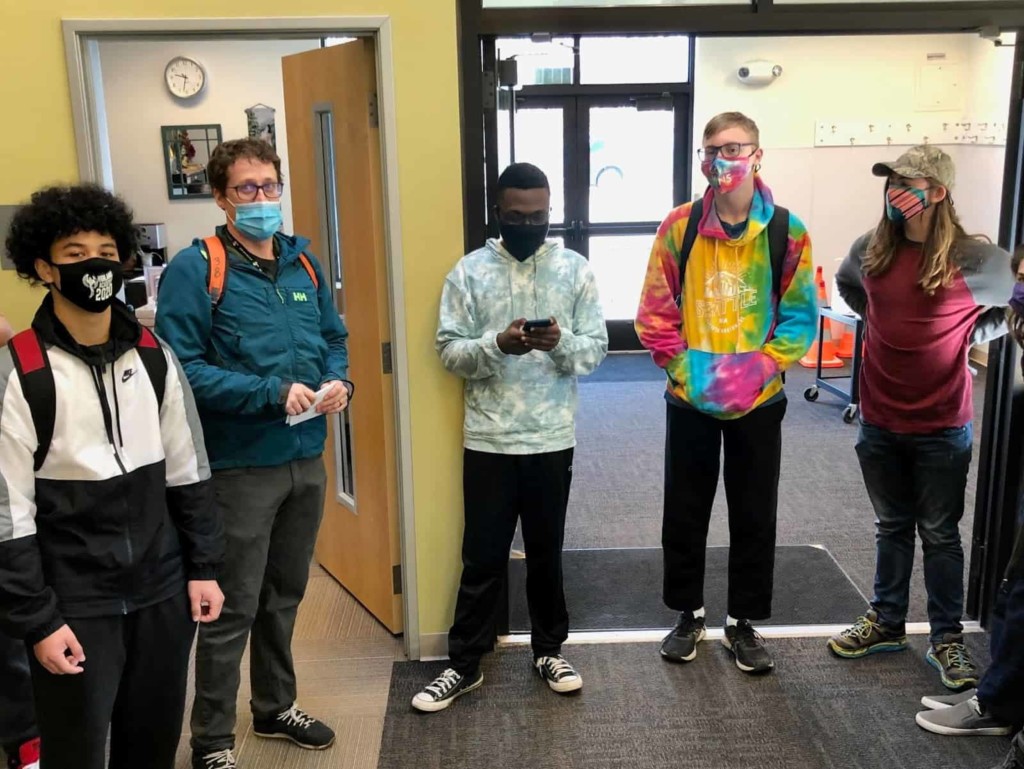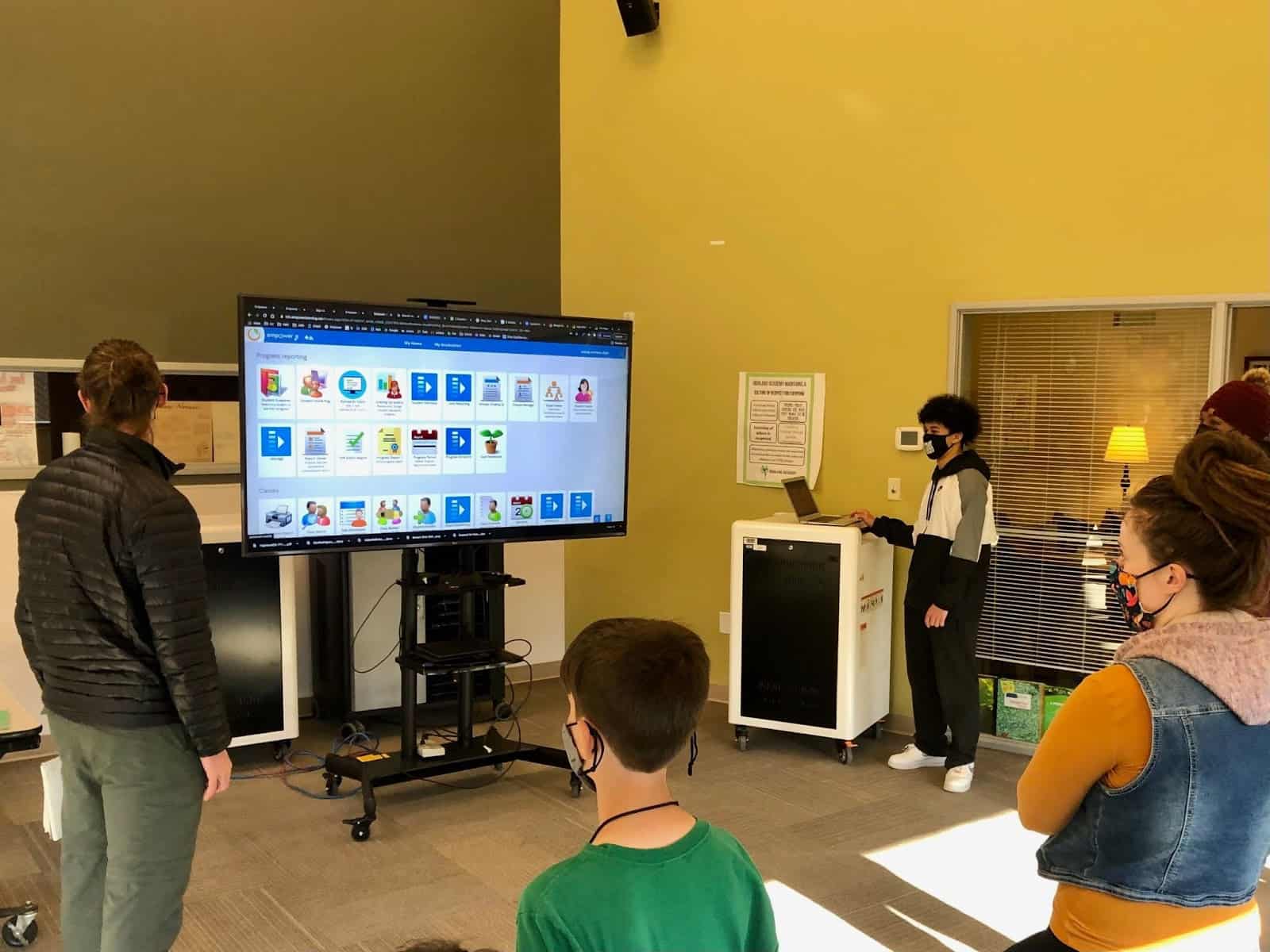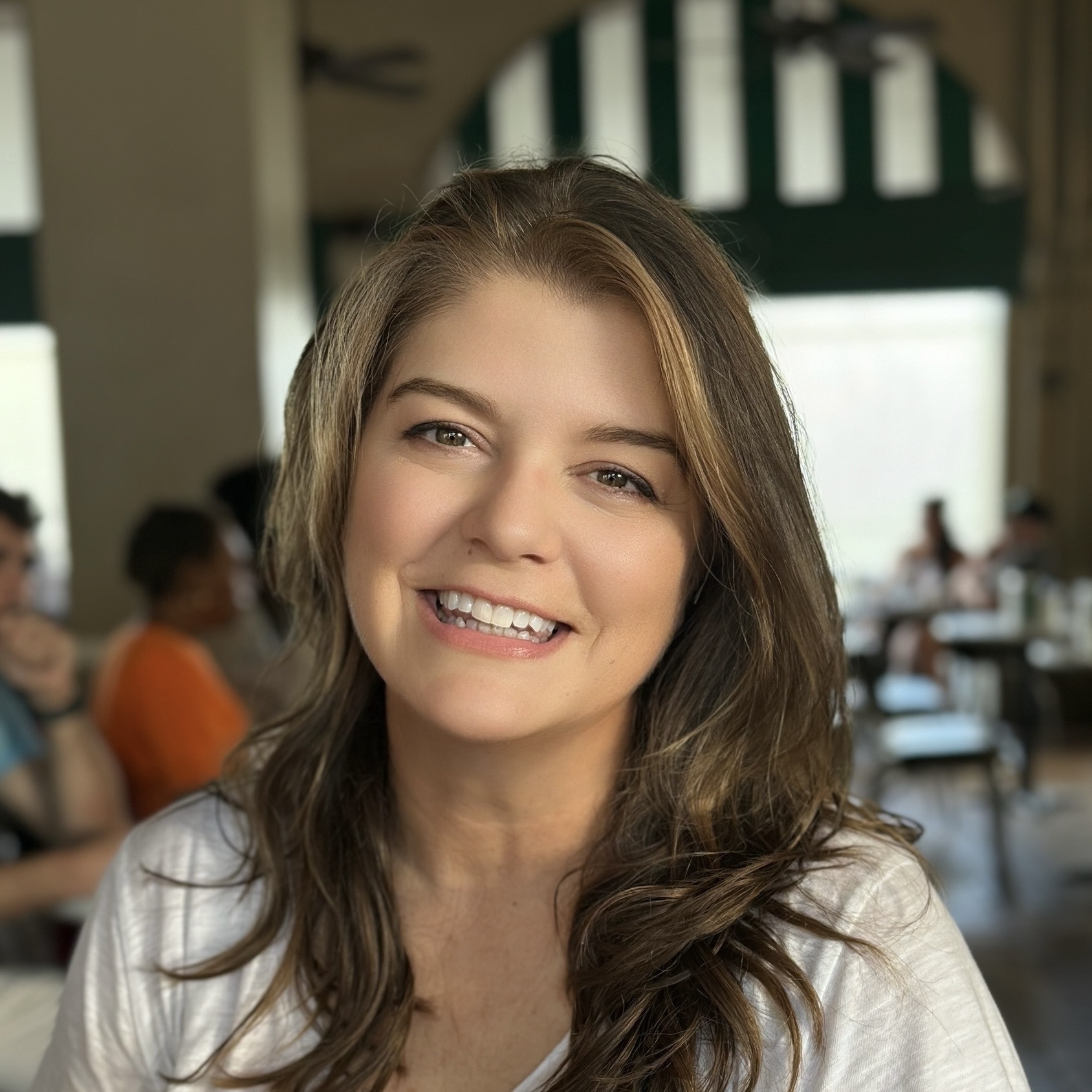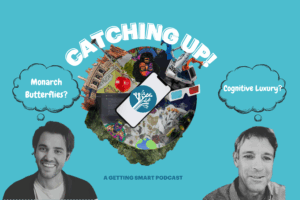Are You Putting Learners First? Here are 8 Ways to Check Yourself

By: Rebecca Midles and Laura Hilger
For as long as there have been schools, there has been the knowledge that schools need to change. This tension often exists at the intersection of power and equity. To combat this tension, numerous new terms, new ideologies and reframings have been created — but perhaps none are as promising as learner-centered design.
When systems say they are learner-centered this means that the system is designed for and by learners. As educators, we have signed up to put learners first, a commitment that varies across the globe within different educational systems. Oftentimes, this dedication to being learner-centered is a defining characteristic of educators who are considered to be professionals and artists of their craft.
If we are really here to do the work of serving every learner, where they are, in real-time so that they become agents for their own learning who are prepared for life after high school, it’s necessary that we make a shift to students-centered practices that ground in anti-oppressive practices, inclusivity and cultural responsiveness.
Student-Centered Learning, sometimes referred to as the aforementioned learner-centered education, encompasses the idea that instruction should be shifted to focus on each and every student’s needs. This focus on students typically means disrupting traditional constraints like seat time, grade bands, state accountability, and many of the relics of education’s past that reinforce systems of power, marginalization, bias and inequitable interventions. This approach also invites radically different systems and structures at the fullest level of implementation.
Unfortunately, all too often, well-intentioned student-centered models, policies, projects and even magnet schools develop such a mission, only to veer off the path and become adult-centered before they are able to truly and deeply embed the student-centered culture and components. It can be hidden well, although often inadvertently, and in order to make needed shifts, it’s important we call out what practices can contribute to adult-centered, and student-centered learning. We have identified eight signs that educators and edleaders can look for to reflect on the ways learners are at the center of learning and whenever possible, driving the learning.
Innovative Use of Time
When looking at the daily schedule, consider how the innovative use of time and scheduling aligns to and nourishes the vision you have for your learning community, how it grows learner agency, cultivates learner readiness, and enables procedural efficiency with flexibility.
The traditional school calendar that was influenced long ago by the agrarian summer break and national holidays has not changed for the majority of our school systems. The challenge of bus schedules is still often cited when learning teams are trying to design creative use of time and move away from a universal start and end time in order to find more “flex” time. In some cases, students are having to move across campus to get to classes and often may not even choose an elective because of the distance traveled in a designated passing time. There have been attempts and some success with rethinking in-service days, instructional prep time, and interim learning sessions between semesters, but for the most part, this structure can be a significant obstacle to being more systematically set up to be learner-centered.
Guiding Questions for Innovative use of Time
- Why is there a need to change our master schedule?
- What is the purpose of a master schedule and how can these goals be met in other ways?
- How might you design schedules that better align to your learner-centered shared vision?
- What are the current barriers that your community faces when looking at changing the schedule, and which one(s) can you begin to dismantle?
Possible Look Fors
- Personalized time in the schedule to focus on their learning needs
- Offers extended learning time (exploratory, intensive, intercession, Interims) for learners to grow in fields of their choice. Options supported by equitable access (transportation, etc.)
- A consistent dedicated time for advisory to mentor and support personalized learning needs and goals
- A transparent and systemic procedure for schedule changes to support learner readiness so that when a learner is ready for the next level or course (depending on what is best for the learner) they do not have to wait for a quarter or semester break
- Embedded professional learning time
Flexible Grouping of Learners
Flexible grouping aligns to learner needs and context which supports flexible pacing, leading to a system that allows learners to advance upon mastery rather than seat time or age. When cohorts of learners are based on age over strategic learner readiness, you are less likely to have personalized learning at a deep level for each and every learner. Learners deserve academic content that is appropriately challenging with support they need and teachers that are prepared for those levels – versus the artificial push and pull of getting everyone to the same spot.
Often, the grouping of learners can be directed by the teacher’s schedule and their content area with the additional layers of class sizes or timing of course offerings. Offerings such as electives, AP or math classes can be lynchpins for designing learning options and often create obstacles for personalized learning. In addition, labeling learners by permanently sorting or tracking results in an inequitable system that is based on privilege, access, and convenience. Alternatively, flexible grouping gives educators and learners the freedom to move based on learner needs by content, context, or social-emotional priorities.
In the landscape of needed equitable structures, when a freshman class requires prerequisites, a system needs to review whether all middle schools provide this opportunity. If not, is the sorting outcome worth the change? Is the prerequisite more about the adults or the learners, and if learners – for all learners or just a few? Many systems address this with pre-assessments or one-to-one meetings to share expectations, but why not reconsider the onramp by reviewing the final outcomes that are intended with this class? If it is to access higher rigor earlier, why not imbed that in all courses, all the time, by implementing a more personalized learning approach within the content and context?
Guiding Questions
- Where might you begin using learner needs to drive group formations?
- When students show readiness for the next level of rigor that is beyond a grade-level content – what is the process? Consequently, when learners need more scaffolding to reach what is being presented, what are the supports?
- How do you build a system that is anti-tracking, and adjusts groupings based on needs in real-time?
- How could you provide or increase equitable access to rigorous coursework?
Possible Looks Fors
- At the classroom level, learner groups are fluid
- At the classroom level, depending on the learning requirement, learner groups are based on readiness, learner choice, context, engagement, and/or how the content is represented in alignment with learner needs/interests
- As needed, learners move to different groups upon demonstration of learning
- At the systems level, scheduling processes support flexibility and what is best for learners within that context (i.e., moving the learner now vs. waiting until the quarter or semester)
- Learner needs drive the groupings
 Sequence and Documentation of Learning
Sequence and Documentation of Learning
An inclusive process was used to design the systemic, aligned, accessible, and essentialized learning continuum that is culturally responsive, non-biased and anti-racist, and shows what all learners need to know and be able to do. The learning continuum drives all teaching, learning, and curricular resource decision-making.
When a system has a canon or a third-grade curriculum, the concept of this structure can often be intended for the adults that deliver the instruction and the provided resources. Personalized systems have aligned essential learning goals that show what all learners need to know and be able to do and provide options and flexibility for resource selection and context. The look fors or learning goal indicators are common but the process may vary.
Guiding Questions
- Are standards/competencies embedded in your curriculum?
- To what degree have you essentialized your standards/competencies, and aligned them as a system?
- Which content areas need systemic alignment attention now?
- How will you put together a team or create collaborative involvement opportunities for your community to co-create the learning continuum?
- Does unit testing happen as students need it, or on Friday before the weekend? What are the gathered points of evidence to show either a learner or the group of learners are ready for a summative assessment?
Possible Look Fors
- A systemic, aligned PK-12 continuum of learning standards and/or competencies has been prioritized for both academic and SEL/non-academic expectations
- All levels of the learning community were involved in the design of the learning continuum
- At the classroom level, educators and learners use these standards or competencies to drive teaching and learning
- The continuum is accessible by all, for all levels of learning so that everyone can see what is required from one level to the next
- Curricular resources that are being used are aligned to the learning continuum; resources are allocated based on the learning continuum
Assessment Literacy and Practices
Educators work together to design quality common measurement tools aligned to the learning continuum such as rubrics to enable both educators and learners to provide feedback on the learning, growing assessment capable learners. These assessments are transparent and accessible to the entire learning community. Based on readiness, a variety of types of aligned assessments are provided for learners over multiple opportunities, grounded in learner choice. Over time, learners are part of the assessment design process, leading how they will show what they’ve learned.
Guiding Questions
- To what degree are assessments aligned to the standards/competencies required for learning?
- To what degree are we using common assessment tools as a PLC or content team?
- How are we using assessments with our learners?
Possible Look Fors
- Common assessment tools such as rubrics are aligned to the learning continuum and being actively used at the classroom level
- Feedback is aligned to the assessment
- The assessment is not a secret; instead, it is accessible and used throughout the learning experience
- A variety of formative assessment opportunities takes place through the learning journey
- Learners have choices in how they demonstrate their learning
- Learners are aware of the rubric, can speak about the rubric, and are using it to drive assessment practices such as self-assessments and peer assessments
- As ready, learners can use the rubric to design how they are going to demonstrate their learning
Grading Practices (or Recording and Reporting)
The systemic grading practices focus on showing what has been learned aligned to the learning continuum rather than cumulative letter grades, seat time, or non-academic behaviors such as penalization for late assignments. The concept of grading is about what a learner earned, not what was given.
For time-based traditional systems, the final learning mark/grade for quarters/semesters can be an average of scores, and not all averaged scores are created equal. A grading process may be a mixed percentage of assignments, formative assessments (like quizzes) and summative assessments (like tests, projects, presentations) mixed in with either behavior, effort or extra work. Because educators tend to work in subjective silos with grading practices, this leads to a variety of grading methods resulting in inequitable outcomes. In addition, these individual scores can be based on a random collection of marks and different pedagogical approaches, approaches that may or may not allow retakes, or shared learning criteria, and thus can make it difficult for learners to have agency within this structure.
Some learning systems have moved toward inviting learners to revisit marks on their work to improve, grow and ultimately earn proficiency for a learning outcome. Others look at separating the habits of a learner or work ethic separate from the content learning. In a personalized learning system, the grades should not be a surprise or a feeling of wait and see. In this same vein, a grade is a point in time about where a learner is and therefore, the grade is not static.
Guiding Questions
- What is our data telling us about our learners’ progress and how does that relate to how we report out on learning and goals?
- How might we make our grading practices more equitable?
- Are learners aware of learning outcomes and expectations?
- What are the routes for learners to refine or revisit their learning?
Possible Look Fors
- The system reports out on the progress of the learning using the standards/competencies
- Non-academic learning such as SEL, if assessed, is assessed separately from academic learning
- The system has a strategic plan or goal for moving away from letter grades and a first step might be that zeros and Fs are no longer used
Instructional Framework
Changing how learning is reported does not directly change the way learning happens. A shared vision of learning requires teachers and related stakeholders to come together to define what they want for their graduates and learners. This vision has to be for all learners, with thoughtful inclusion as the driver. If the framework is not about the needs of all learners then it is not learner-centered and continues the practice of education for some or most but not all learners.
An instructional framework is about the learning design that supports this vision – the strategies, the assessment practices, the data that is collected, and how learning is supported, nurtured and captured. At the district level, it becomes the essential driver for professional learning and resource allocation.
A systemic instructional framework grounded in what the community believes about teaching and learning drives professional learning opportunities and modes and provides a common language for educators to discuss where they are in their professional practice and what they need to do in order to improve. How this framework translates into a classroom can and should have learners at the center of that work helping to co-design the environment.
Guiding Questions
- What is an instructional framework?
- Why is an instructional framework important?
- Where is our learning community at with designing and/or using an instructional framework, and what might be some next steps?
- What teaching strategies support the teaching and learning vision?
- How does a teacher know what they are doing well and what support they need?
Possible Look Fors
- The framework and educator readiness drives our professional learning opportunities, feedback, and continuous improvement
- Educators can speak about the instructional framework
- The use of the framework across different campuses, classrooms, and PLCs is evident
Learning Culture
The culture is designed with the learners to cultivate belonging. Learners are part of the decision-making, community agreement development, shared accountability processes, goal setting, and celebrations. The learning ecosystem depends on their leadership, their commitment and their needs.
The role of student leadership within a learner-centered community is collaborative in nature and their roles entail active involvement in decision making, brainstorming solutions and creating community agreements. Leadership in this context is more than a label and creates space for codesign, mutual accountability and active responsive structures. This can also transfer to the concept of ranking learners with titles and honors; some systems have completely done away with the titles of valedictorian and salutatorian or have settled with a Latin honor distinction which makes space for recognition for groups of learners.
Another key component of every learning culture is discipline. Originally meant to convey learning, it is often an inequitable gotcha game, and counterintuitive to a system dedicated to learning. Because certain types of learner behavior are expected, a learner-centered system ensures that this is not only being taught but celebrated. Alternatively, when social-emotional learning is referred to as a soft skill it implies that it is not as important as academic learning and can be either an add-on or supplementary. If a system teaches learning behaviors, then the growth in this area should be shared alongside academic learning–if it is not, then it is truly a soft attempt and supplementary over primary in design.
Guiding Questions
- To what degree do we have active community agreements?
- How do we hold ourselves and each other accountable for our learning culture?
- How do we celebrate our learning culture?
- What is our goal-setting process for our culture?
Possible Look Fors
- Behavior expectations and developing a culture of belonging are taught
- Learner created community agreements drive behavior expectations
- Discipline processes/protocols are systemic and aligned to the community agreements (Restorative Justice, Circles, Peer mentors, etc.)
- Learners help nourish the community by making decisions for both problem-solving and celebrating
- Goal setting structures are explicitly taught and are active at all levels of the organization
Flexible Use of Space
The learning environment is set up so that learners have agency over their learning space to decide where they will learn best for that particular context. The learning community then dedicates resources to get creative with its use of space, which includes expanding learning opportunities beyond the classroom walls as well as online learning options. Off-campus learning requires intentionality towards growing authentic community and business partnerships that are dedicated to learners.
Guiding Questions
- In what ways do learners get to choose where they will learn? Why is this important?
- Where is your district at with extending learning beyond the traditional classroom walls?
- What is possible with offering rich learning experiences outside of the classroom?
- How equitable are your extended learning opportunities?
- How are you leveraging community partnerships?
Possible Look Fors
- Innovative school structure and use of space
- Collaborative spaces
- Learner choice with where to learn
- Access to rigorous and meaningful extended learning opportunities
- Relationships with engaged community and business partnerships
Collaboratively, the learning community intentionally develops agency at all levels of the organization so that each and every learner graduates choice ready. Our educator’s promise to learners is that they leave our system with agency. Our charge then, is that each and every educator becomes a change agent for equitable student-centered learning systems that grow this promise of agency.
Where will you get started?
For more, see:
- Educator Competencies for Personalized, Learner-Centered Environments
- Invention Opportunity: Measuring What Matters
- 6 Ways School Leaders Can Use TxLx Resources for Learner-Centered Summer Programs
Laura Hilger is the Director of Teaching and Learning at KnowledgeWorks. She has spent her entire career devoted to learning communities and systemic change, working as a classroom teacher, a dean of students and an assistant principal, as well as an instructional coach in nine states.
Stay in-the-know with innovations in learning by signing up for the weekly Smart Update.







Abhishek
Amazing Blog post. thanks for share with us